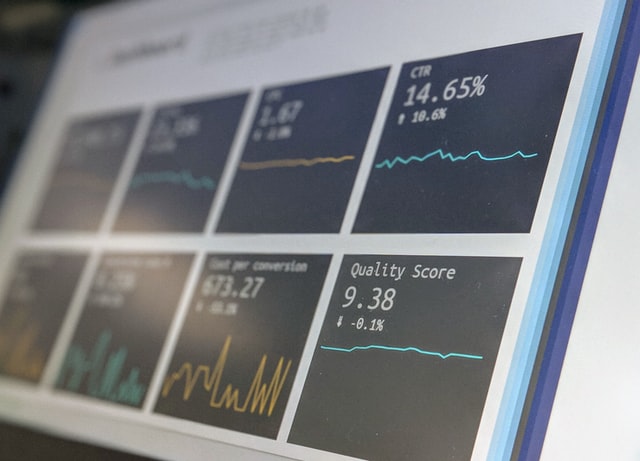Business Intelligence (BI) refers to the technologies, applications, strategies, and practices used to collect, integrate, analyze, and present business information. The primary goal of BI is to support better business decision-making by providing actionable insights based on data.
Key Business Intelligence (BI) Functionalities:
1 - Data Collection and Integration:
- ETL (Extract, Transform, Load): BI systems extract data from various sources (databases, CRM systems, ERP systems), transform it into a consistent format, and load it into a data warehouse or data lake.
- Data Warehousing: Centralizes and organizes large volumes of data from different sources, enabling efficient querying and analysis.
2 - Data Analysis:
- Data Mining: Identifies patterns, correlations, and trends within large data sets.
- Predictive Analytics: Uses historical data and statistical algorithms to predict future outcomes.
- OLAP (Online Analytical Processing): Enables users to perform complex queries and analysis, such as slicing and dicing data, drilling down into details, and aggregating data.
- What-If Analysis: Assesses the impact of potential business decisions by modeling different scenarios.
3 - Data Visualisation:
- Dashboards: Provide a real-time, interactive view of key performance indicators (KPIs) and metrics, often through charts, graphs, and maps.
- Reports: Generate static or dynamic reports that summarize data findings, often for different departments or stakeholders.
- Scorecards: Measure performance against defined objectives, often using KPIs.
4 - Data Reporting and Distribution:
- Automated Reporting: Schedules and distributes reports to relevant stakeholders, ensuring that everyone has access to the latest data insights.
- Ad-Hoc Reporting: Allows users to create custom reports on the fly, often using drag-and-drop interfaces.
5 - Self-Service BI:
- Data Exploration: Empowers non-technical users to explore data sets, ask questions, and generate insights without relying on IT or data experts.
- Custom Dashboards and Reports: Enables users to create personalized dashboards and reports tailored to their specific needs.
6 - Collaboration and Sharing:
- Data Sharing: Facilitates the sharing of insights and reports across departments, promoting data-driven collaboration.
- Annotations and Comments: Allows users to annotate data, add comments, and collaborate within the BI tools.
Business Intelligence Objectives:
- Improved Decision-Making: BI enables data-driven decision-making, reducing reliance on intuition and guesswork.
- Increased Operational Efficiency: By providing insights into business processes, BI helps identify inefficiencies and areas for improvement.
- Enhanced Competitive Advantage: BI helps companies stay ahead of the competition by identifying market trends and customer preferences.
- Better Customer Insights: BI tools analyze customer data to understand behaviors, preferences, and needs, leading to better-targeted marketing and improved customer satisfaction.
- Risk Management: BI systems help identify and mitigate risks by providing visibility into potential issues before they escalate.
- Revenue Growth: Through data analysis, BI can identify new revenue opportunities, optimize pricing strategies, and improve sales effectiveness.
Managing Data for Corporate Companies
Corporate companies manage data differently based on their size, industry, data complexity, and business goals. Here are the different approaches:
1. Data Centralization:
- Data Warehousing: Large enterprises often use data warehouses to centralize data from various departments, enabling a single source of truth. Data is structured, cleaned, and organized for reporting and analysis.
- Data Lakes: Companies dealing with unstructured or semi-structured data may use data lakes to store raw data, allowing for more flexible analysis.
2. Data Governance:
- Data Quality Management: Ensures that data is accurate, complete, and consistent across the organization.
- Data Privacy and Compliance: Ensures that data management practices comply with regulations like GDPR, HIPAA, or CCPA. This is crucial for protecting sensitive information and avoiding legal penalties.
- Master Data Management (MDM): Ensures that key business data (e.g., customer, product, or supplier data) is consistent and accurate across all systems.
3. Data Integration:
- Enterprise Application Integration (EAI): Integrates data from different systems (CRM, ERP, SCM) to ensure seamless data flow across the organization.
- API Management: Uses APIs to enable real-time data integration between systems, allowing different applications to communicate and share data efficiently.
4. Data Analytics:
- Big Data Analytics: Uses advanced analytics tools and technologies (e.g., Hadoop, Spark) to process and analyze large, complex data sets.
- Real-Time Analytics: Processes data as it arrives, enabling instant insights and timely decision-making, which is essential for industries like finance and e-commerce.
5. Cloud vs. On-Premises Data Management:
- Cloud-Based Data Management: More companies are moving to cloud-based data platforms (like AWS, Azure, or Google Cloud) for scalability, flexibility, and cost savings. Cloud solutions offer advanced analytics, AI, and machine learning capabilities.
- On-Premises Data Management: Some companies prefer on-premises solutions for data security, control, and compliance reasons. This approach is common in highly regulated industries like banking and healthcare.
6. Data Security:
- Encryption: Protects data both at rest and in transit, ensuring that sensitive information remains secure.
- Access Controls: Implements role-based access controls (RBAC) and other security measures to ensure that only authorized personnel can access sensitive data.
- Data Backup and Disaster Recovery: Ensures that data is regularly backed up and can be recovered in case of a system failure or data breach.
7. Data Democratization:
- Self-Service BI: Encourages non-technical users across the organization to access and analyze data independently, fostering a data-driven culture.
- Data Literacy Training: Provides training to employees to improve their understanding of data, analytics tools, and how to use them effectively.
8. Data Architecture:
- Modular Data Architecture: Adopts a modular approach to data architecture, allowing companies to scale their data infrastructure as needed without disrupting existing operations.
- Hybrid Data Architecture: Combines on-premises and cloud solutions to leverage the strengths of both, providing flexibility and control over data management.
Conclusion
BI functionalities provide the foundation for data-driven decision-making, helping companies achieve their goals of improving efficiency, competitiveness, and customer satisfaction. The way corporate companies manage data varies based on their specific needs and resources, but the overall goal is to ensure that data is accurate, accessible, secure, and used effectively to drive business success.




